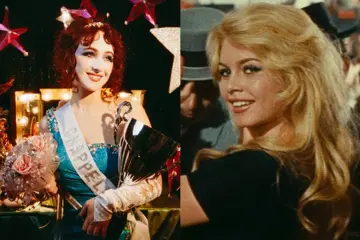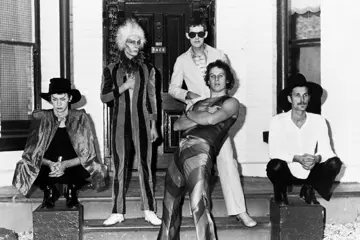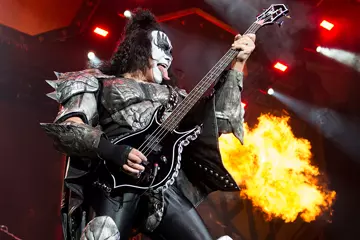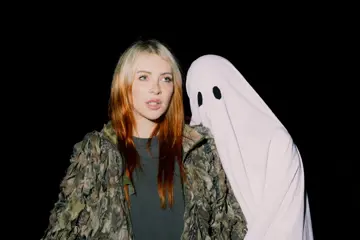Growing up between rural Canada and bucolic Launceston, Stephanie Lake always felt close to nature. In choreographing her dance piece Colossus, she drew heavily on natural phenomena. “Growing up on the Canadian prairies,” Lake explains, “I loved so much to watch the flocks of birds in the big skies – the seemingly effortless changes of direction and shifting leadership. It’s spectacular to watch. By using those formations as impetus in Colossus, I’m trying to say we humans are part of nature, despite our disastrous desire to dominate and destroy it.”
Colossus is a work choreographed for a huge troupe of 50 dancers. It had long been Lake’s dream to make a work on such a scale. “I’ve [always] loved working with big numbers of dancers,” Lake says. “The intensity and dynamism of huge groups of dancers, moving and breathing together, is incredibly satisfying and exciting.”
In Colossus, movements ripple through the group, and dancers move both in and out of sync. It’s a visually arresting work on a grand scale. But, with its evocation of the movement of animals – the murmuration of birds, the flow of schools of fish – it pokes at notions of group dynamics, and humans as herd animals.
“Colossus looks at both the good and bad of those dynamics,” Lake offers. “On the one hand you have the exquisite patterning and geometric synthesis – real beauty created because of the mass – with all of these bodies working together to create a more beautiful whole. Cooperation, symbiosis, a multitude of bodies working as one – it is a beautiful thing.
Don't miss a beat with our FREE daily newsletter
“On the other hand, we see the ugliness of human behaviour. The ways that the herd can isolate and target one of its own. How quickly the mob can turn on one person and the energy gets ugly and aggressive. Big groups of people can bring out the best and worst of human nature. We can organise, unify, galvanise, rally. But we can also riot, bully and turn nasty. I wanted both of those things to appear in the work. There’s a whole section of intricate marching in Colossus – is it a symbol of strength in numbers? Solidarity? Or is it a menacing symbol of militarisation, oppression? I like that duality in the work.”
Lake worked with dancers from VCA and Transit as part of a “monumental team effort” to devise Colossus, the logistics of the production necessitating a “hyper-preparedness” that left little room for improvisation or whimsy. Coming together with contributions from Robin Fox (sound design), Bosco Shaw (lighting design), and Harriet Oxley (costume design), the piece premiered at Melbourne Fringe in 2018. Lake describes its opening night as a moment of “euphoric relief”, the standing ovation bringing her to tears. “I was just so overwhelmed with happiness that we’d pulled it off and that these young dancers were getting a response like that from a full house at the Arts Centre,” she recounts.
It was merely the first grand response that Colossus received. After a short, 60-second promo video for the performance was posted online – “literally my first time putting a video on our Stephanie Lake Company FB page,” Lake offers – it soon took on an online life of its own. “Overnight it was getting shared thousands of times all over the world. We’re now at 3.5 million views. So the work is having this whole other ‘virtual’ life aside from its physical, live version.”
COLOSSUS 2018Colossus ++++++++++++++ Presented by Arts Centre Melbourne in association with Melbourne Fringe ⭐️⭐️⭐️⭐️⭐️ "Thrilling, frightening and entirely unforgettable." Five Stars, Time Out
Posted by Stephanie Lake Company on Saturday, October 27, 2018
Given all the work that went into its maiden performance, Lake never “in [her] wildest dreams” expected to stage it again, but its physical incarnation will return for the Melbourne International Arts Festival, and Lake foresees it “hav[ing] a long life with big shows happening here in Australia and around the world”.
The reason Colossus strikes a chord with audiences, she thinks, is both its roots in the natural world, and the spectacle – and raw humanity – of having 50 people on stage. “There isn’t as much of a separation between audience and performers as I’ve experienced in other shows,” she muses. “The show is quite a communal, involving experience because there is a density of people on stage mirrored by a density of people watching. It feels like we’re all in it together.”















